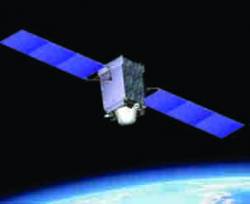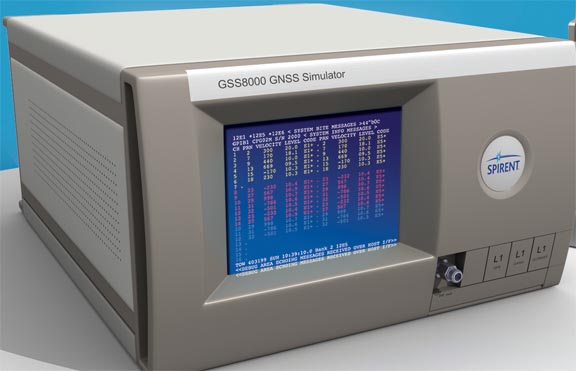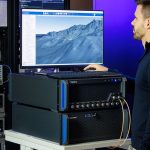 QZS-1 Satellite
QZS-1 SatelliteEncouraged by continuing progress on Japan’s Quasi Zenith Satellite System (QZSS), Spirent Communications has announced that its GSS8000 simulation system now supports QZSS in addition to GPS, Galileo, GLONASS, and satellite-based augmentation systems (SBAS) — reportedly the first RF constellation simulator to do so.
Encouraged by continuing progress on Japan’s Quasi Zenith Satellite System (QZSS), Spirent Communications has announced that its GSS8000 simulation system now supports QZSS in addition to GPS, Galileo, GLONASS, and satellite-based augmentation systems (SBAS) — reportedly the first RF constellation simulator to do so.
The QZSS system, currently under development, is designed to place three navigation satellites in high-altitude orbits to improve navigation performance in areas of Japan that prove difficult with GPS alone. Five of six QZSS signals will use the same signal structures, frequencies, spreading code families, and data message formats as GPS and GPS SBAS signals.
Under technical development led by the Japan Aerospace Exploration Agency (JAXA), which completed a critical design review of the first satellite — QZS-1 — in August, QZSS is drawing on the collaboration of four government agencies and private companies in a Satellite Positioning Research and Application Center (SPAC) established last year. A first QZSS satellite launch is expected in 2010.
An agreement between Japan and the United States, reaffirmed during a November 10 meeting in Tokyo, ensures that GPS and QZSS will be interoperable and compatible. The QZSS plan calls for GPS-interoperable signals at L1-C/A and L1C (center frequency 1575.42 MHz), L2C (1227.6 MHz), L5 (1176.45 MHz), according to Koji Terada, JAXA’s QZSS project manager.
An L1-SAIF (submeter-class augmentation with integrity function) signal at 1575 MH.42 will be interoperable with SBAS) such as the Federal Aviation Administration’s WAAS and Europe’s EGNOS. QZSS will also transmit an experimental signal (LEX) at 1278.75 MHz with a high data rate message (2 Kbps) that is interoperable with Galileo’s E6 signal.
Spirent will initially provide support for L1 C/A code and L1 SAIF QZSS signals and add other QZSS signals as the market develops, said John Pottle, marketing director at Spirent’s positioning technology division.
“Our customers can now test receivers, systems and applications that will use the QZSS signals,” Pottle added. “In addition, Spirent’s systems will combine QZSS with GPS and, if required, Galileo and GLONASS to provide a complete GNSS test bed.”
JAXA and the EU Galileo signal task force have had six coordination meetings to secure RF compatibility between QZSS and Galileo, Terada said. In addition to the E6 frequency, QZSS and Galileo occupy the same spectrum at L5–E5a and nearly the same at L1C–E1 Open Signal.
Since July 2007, coordination efforts are also under way to ensure RF compatibility between QZSS and China’s Compass system.
JAXA and the U.S. National Oceanic and Atmospheric Administration (NOAA) are now working together to allow JAXA to install a QZSS monitoring station on NOAA property in Guam in exchange for access to data collected there.
A similar effort between JAXA and the U.S. National Aeronautics and Space Administration (NASA) is working to establish both a QZSS monitoring station and a two-way satellite time and frequency transfer station at a NASA facility in Hawaii, in support of Japan’s National Institute of Information and Communications Technology (NICT) and the U.S. Naval Observatory (USNO).





